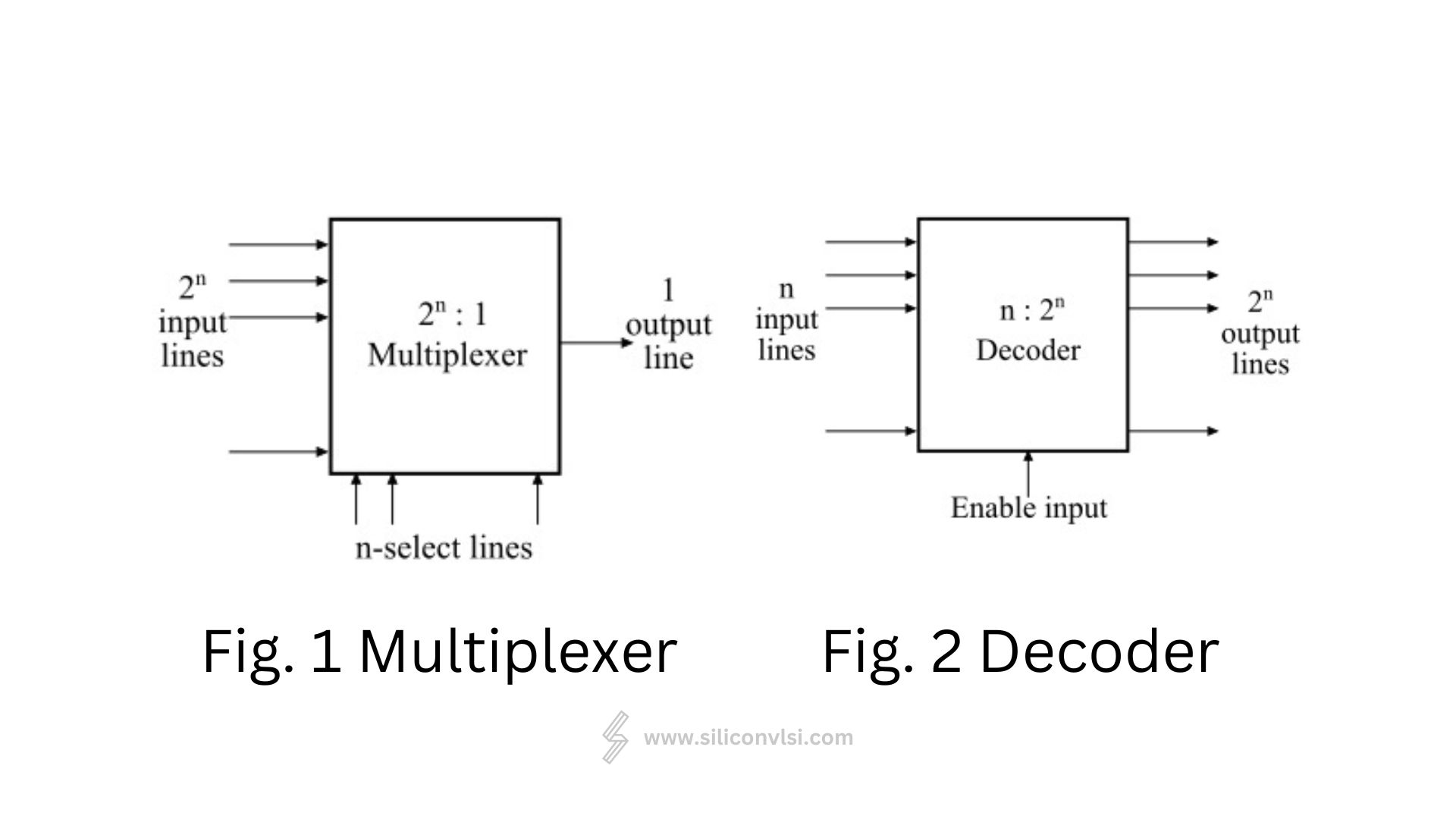A decoder takes two inputs and, based on the input combination, sets one of the output gates high, while a multiplexer uses 4 inputs and 2 select inputs to determine which one of the 4 outputs is activated.
Multiplexer and Decoder
Both multiplexers and decoders play significant roles in the transfer of signals in many communication systems. Although they perform similar functions, there are notable differences between them.

What is a Multiplexer?
I see that a multiplexer, often called a MUX, is a combinational digital circuit that actively selects one input signal from several options and transmits the chosen signal to a single output line. We can think of it as a data selector that picks a specific input from multiple inputs and delivers it to a designated output line. You’ll find that the operational principle of a multiplexer is all about merging multiple inputs into one output, following a many-to-one approach.
What is Decoder?
On the other hand, a decoder is another type of combinational logic circuit that consists of multiple input and output lines. A decoder typically has “n” input lines and a maximum of “m” output lines, where the value of “m” equals 2 to the power of “n” (m = 2^n). When the decoder circuit is enabled, it examines the combination of inputs present and activates one of the 2^n output lines accordingly. This means that only one specific output line will be active high based on the input combination. The block diagram of a decoder is illustrated in Figure 2.
Difference between Multiplexer and Decoder
Here is a simplified table highlighting the differences between a multiplexer and a decoder:
| Basis of Difference | Multiplexer | Decoder |
|---|---|---|
| Definition | A circuit with 2n inputs and 1 output. | A circuit with n inputs and a maximum of 2n outputs. |
| Operation | Selects one input and transmits it to the output. | Converts input codes into corresponding output signals. |
| Primary function | Transmits data and signals. | Interprets coded data. |
| Controlling of operation | Select lines control the operation, determining which input passes to the output. | Enable input controls the operation. |
| Input lines | Has 2n input lines. | Has n input lines. |
| Output lines | Has 1 output line. | Has 2n output lines. |
| Types | Common types include 8:1, 16:1, and 32:1 multiplexers. | Common types include 2:4, 3:8, and 4:16 decoders. |
| Applications | Used in communication systems, data routing, waveform generation, computer memories, etc. | Used in seven-segment displays, memory address decoding, control units, networking, telecommunication systems, etc. |